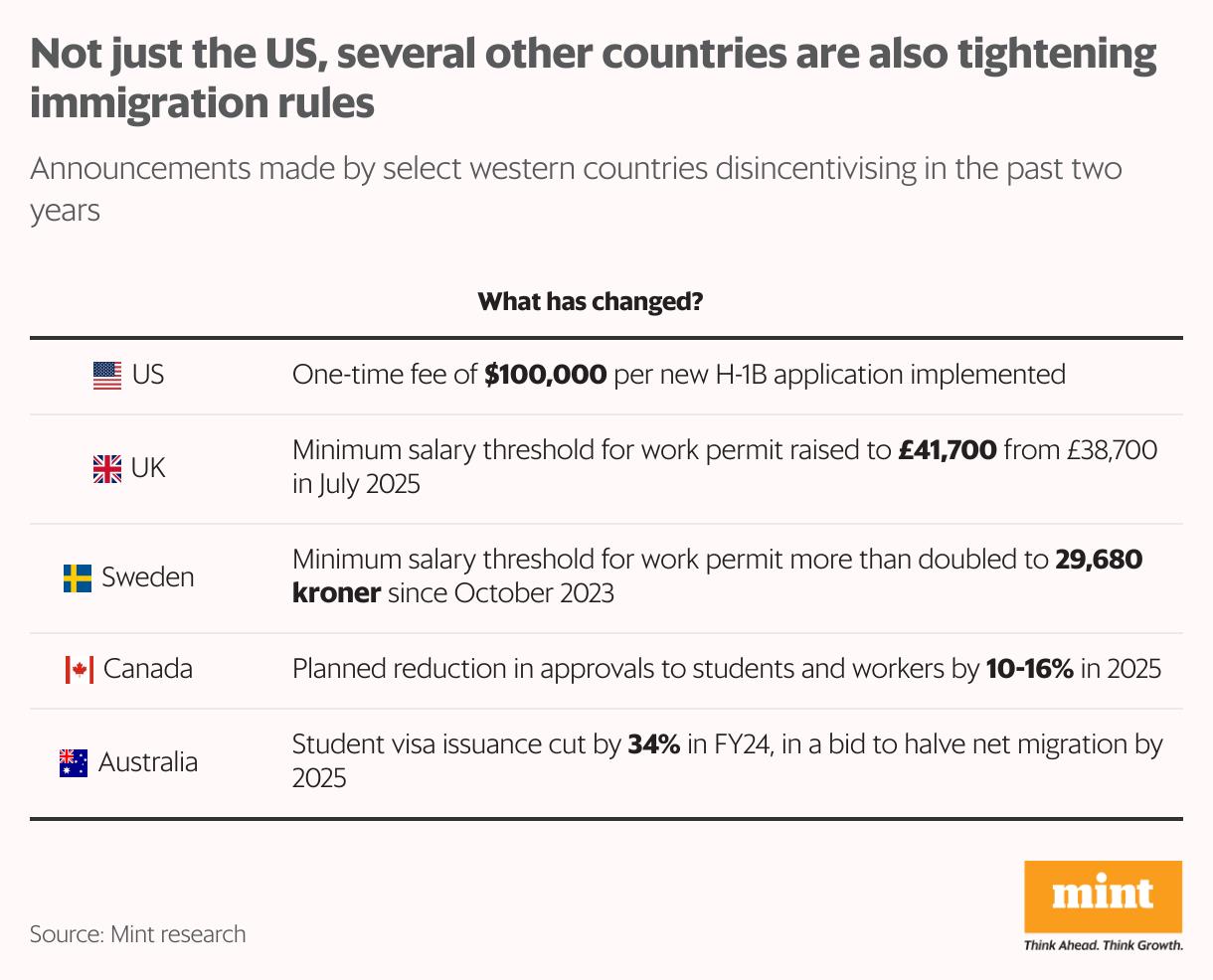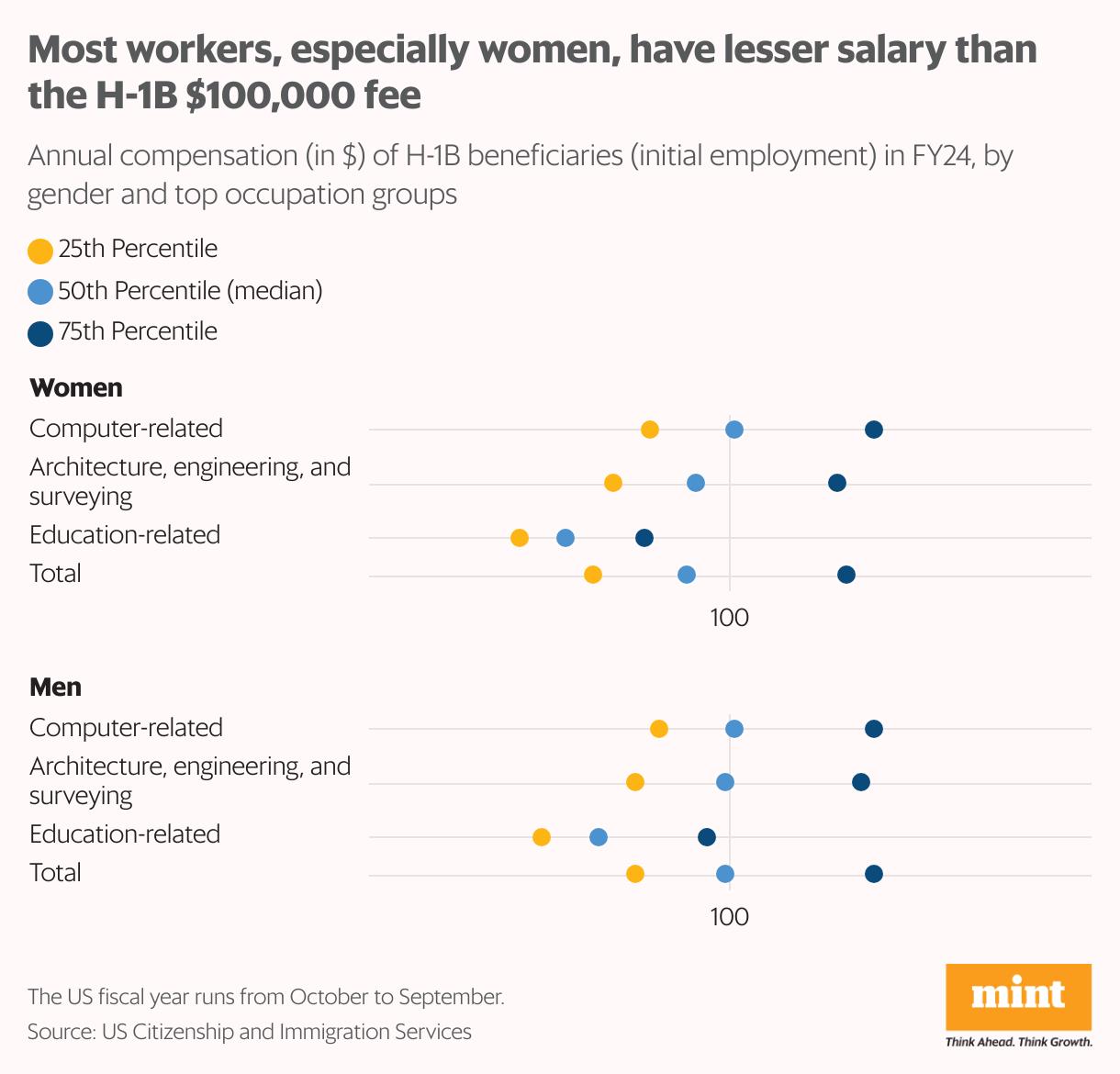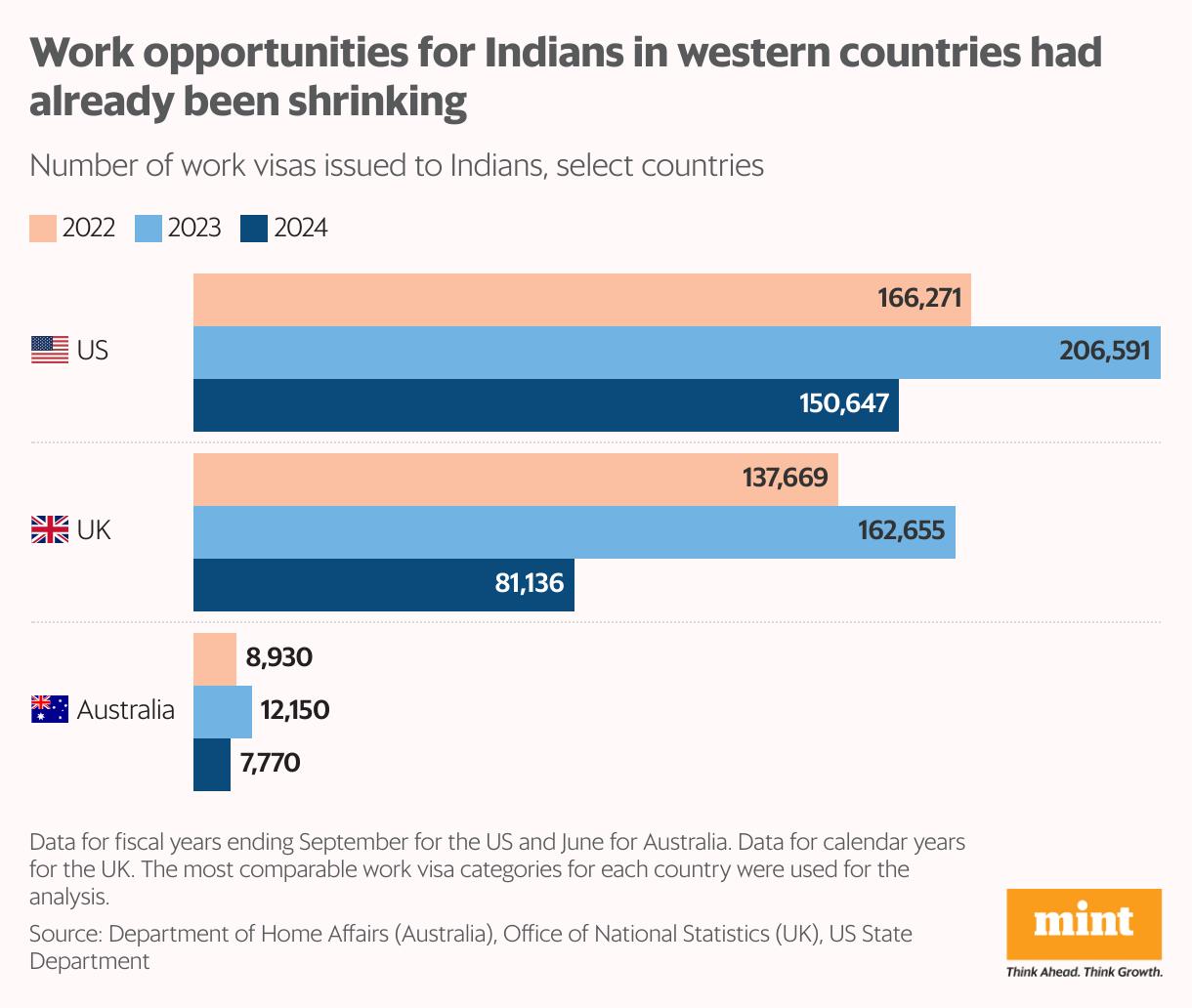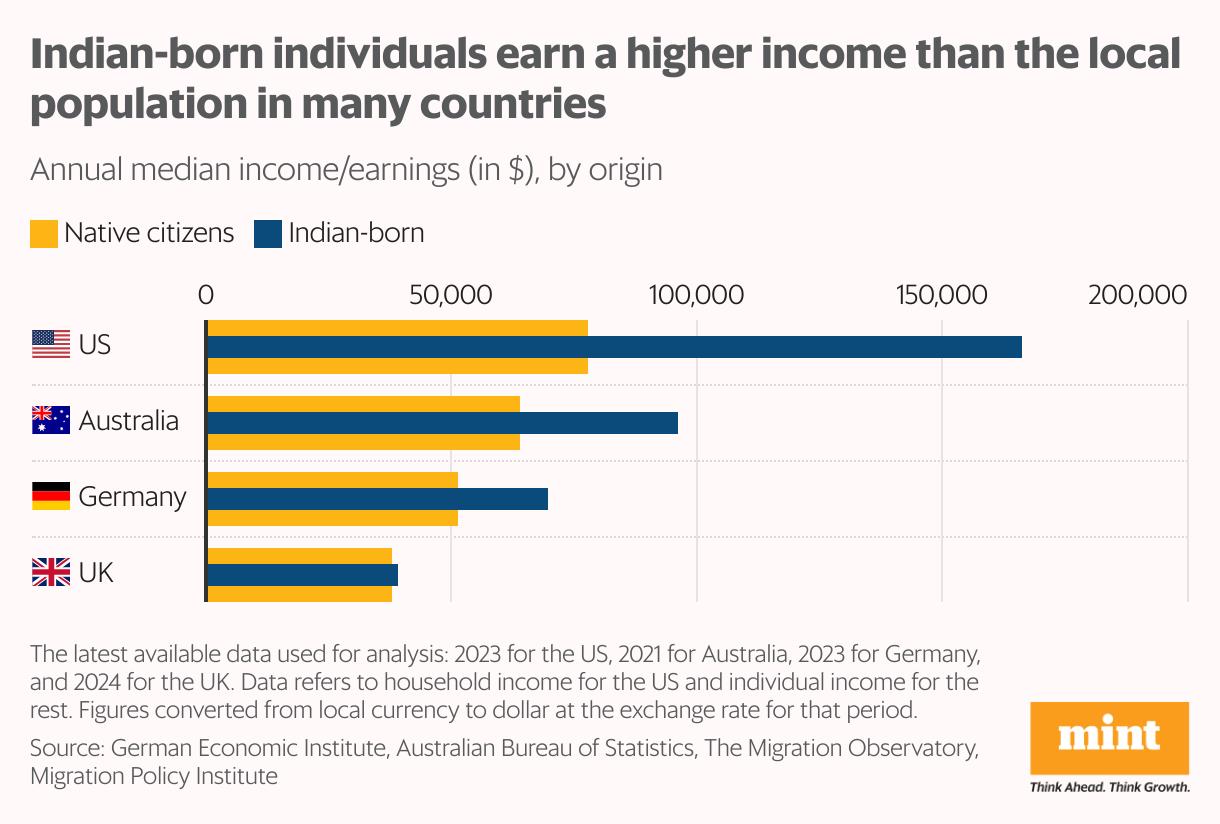America Isn't The Only Western Nation Shutting Its Doors To Skilled Indians
The Donald Trump administration raised the fee for new H-1B visa applications from from $1,000 to $100,000 last week, employing the classic shock-and-awe approach. A subsequent clarification that this would be a one-time fee and not an annual one allayed some concerns.
This new barrier to entry reflects broader anti-immigration sentiment brewing across several Western countries to which Indians have traditionally flocked for work and emigration. These countries have historically relied on countries such as India and China to fill their labour shortages and drive economic growth. However, there has been a shift in public sentiment in recent years, with demands to prioritise a country's own citizens over foreign workers.
Shutting the doorThe US's decision to hike the H-1B visa fee has shocked India, with ripple effects expected in the information technology (IT) sector, which relies on foreign workers in the US. While Trump had begun tightening the rules from the start of his second term, the steep hike came as a jolt.
But the US is not alone in doing so. Several other countries have also been adjusting to their immigration policies to disincentivise skilled foreign workers, while cracking down on illegal and low-skilled workers.
Also Read | Did Trump just slam the door on Indian doctors and nurses
The UK and Switzerland had already increased the minimum salary threshold for a work permit, restricting the pool to a small set highly skilled workers. Canada and Australia, the other top destinations for Indians, also plan to issue fewer student and work permits to reduce migration.
Data from India's external affairs ministry shows that the US is the largest destination, with 5.4 million overseas Indians, or 15.3% of the total, as of 2024. Meanwhile, the UK, Germany, Canada, Australia and Switzerland together account for nearly 17%.
Talent taxFor at least a quarter of a century, foreign workers in the US have offered their skills, innovation and leadership to US companies. Alphabet chief executive officer Sundar Pichai, Microsoft CEO Satya Nadella, and Tesla and SpaceX head Elon Musk were all H-1B visa holders at one point.
While Trump's decision applies to every country, Indians will be disproportionately impacted as more than 70% of H-1B visas holders are Indian citizens.
Also, this visa is not limited to the tech sector.“There is a misconception that H-1B visas for tech workers. A huge range of sectors such as health care, non-profits, research institutions and architectural firms will be badly hit," said Karin Wolman, an attorney in New York.
The one-time visa fee is higher than the annual salaries of most workers and will nearly double the cost to companies sponsoring the visa, at least for the first year. Data shows the salary-to-visa-fee disadvantage will be even higher for women applicants.

Declining trend
Even before US began its intense crackdown on legal and illegal immigrants, there had been a squeeze on work permits to Indians, reflecting years of discontent due to economic slowdowns and a lack of employment prospects in Western countries. The covid-19 pandemic and an escalating cost-of-living crisis further fuelled this anti-immigration sentiment. A Mint analysis of work visas approved by the US, the UK and Australia shows a decline between 2023 and 2024.
Also Read | Mint Explainer | China's K visa vs US H-1B rules: What it means for Indi
The number of work visas issued to Indians fell 27% year-on-year in the US in FY24 (October-September), 50% in the UK in 2024, and 36% in Australia in FY24 (July-June). The simultaneous squeezing out of foreign workers by these countries leaves Indians with little room to explore.“There's a worldwide trend currently against foreigners coming into a country. But if businesses can't find labour in their own countries with ageing populations, they will have to rely on migrants," said Cyrus Mehta, founder of New York-based Cyrus D. Mehta & Partners.
Income impactIndians, especially highly skilled and highly educated ones, have an incentive to move abroad. According to a report by the World Bank titled 'Migrants, Refugees and Societies', Indians who migrate abroad often see their incomes more than double, earning salaries that would take them more than 20 years to attain in India. While the standard of living and expenses are higher, the savings they send to India through remittances offer a huge advantage. A Mint analysis shows the incomes of Indian-origin workers abroad can be 1.5 to 2 times higher than those of Indians working in India.

Since the Indians who migrate to other countries legally are usually highly educated and well-to-do, they have a chance of earning more than the citizens of the country where they work. This income gap has become a source of growing discontent among citizens of Western countries.
Also Read | IT's profit at 5-year low. Will a wave of visa fees drown the sector Legal Disclaimer:
MENAFN provides the
information “as is” without warranty of any kind. We do not accept
any responsibility or liability for the accuracy, content, images,
videos, licenses, completeness, legality, or reliability of the information
contained in this article. If you have any complaints or copyright
issues related to this article, kindly contact the provider above.
Most popular stories
Market Research

- Kucoin Presents Kumining: Embodying Simple Mining, Smart Gains For Effortless Crypto Accumulation
- 1Inch Becomes First Swap Provider Relaunched On OKX Wallet
- Cregis Joins TOKEN2049 Singapore 2025
- Leverage Shares Launches First 3X Single-Stock Etps On HOOD, HIMS, UNH And Others
- Blockchainfx Raises $7.24M In Presale As First Multi-Asset Super App Connecting Crypto, Stocks, And Forex Goes Live In Beta
- BILLY 'The Mascot Of BASE' Is Now Trading Live On BASE Chain




















Comments
No comment